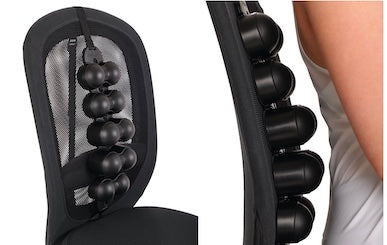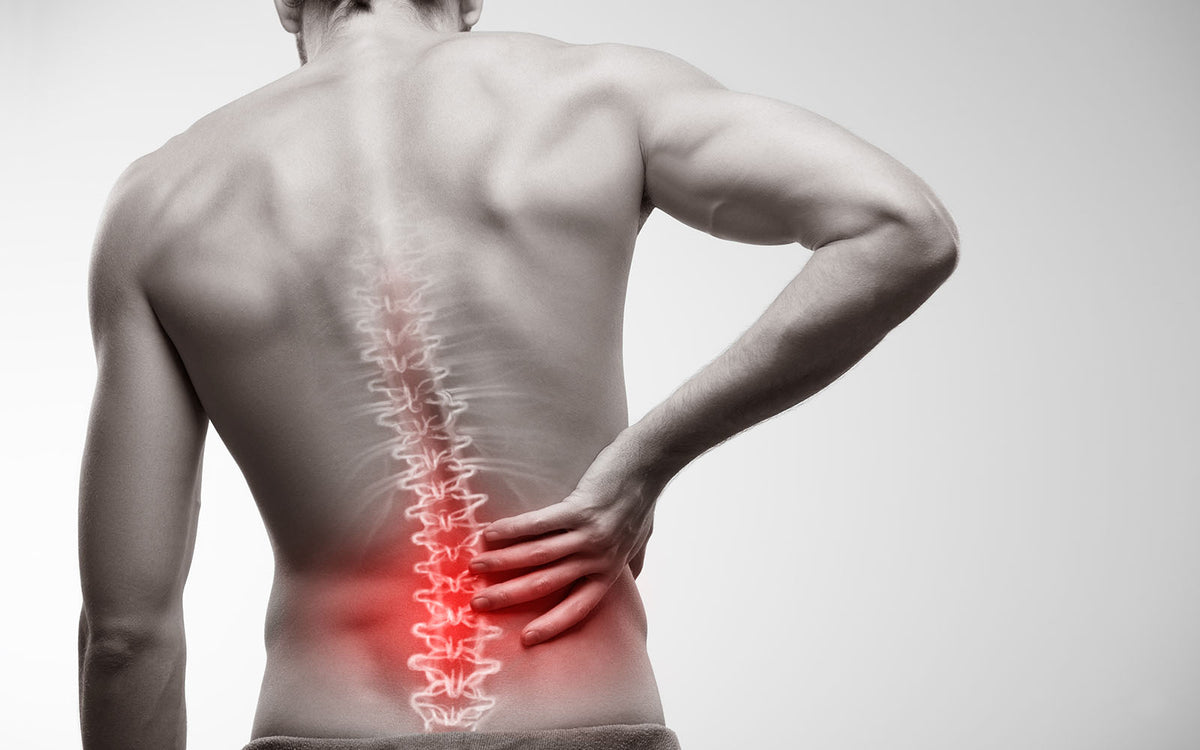Mid Back Pain
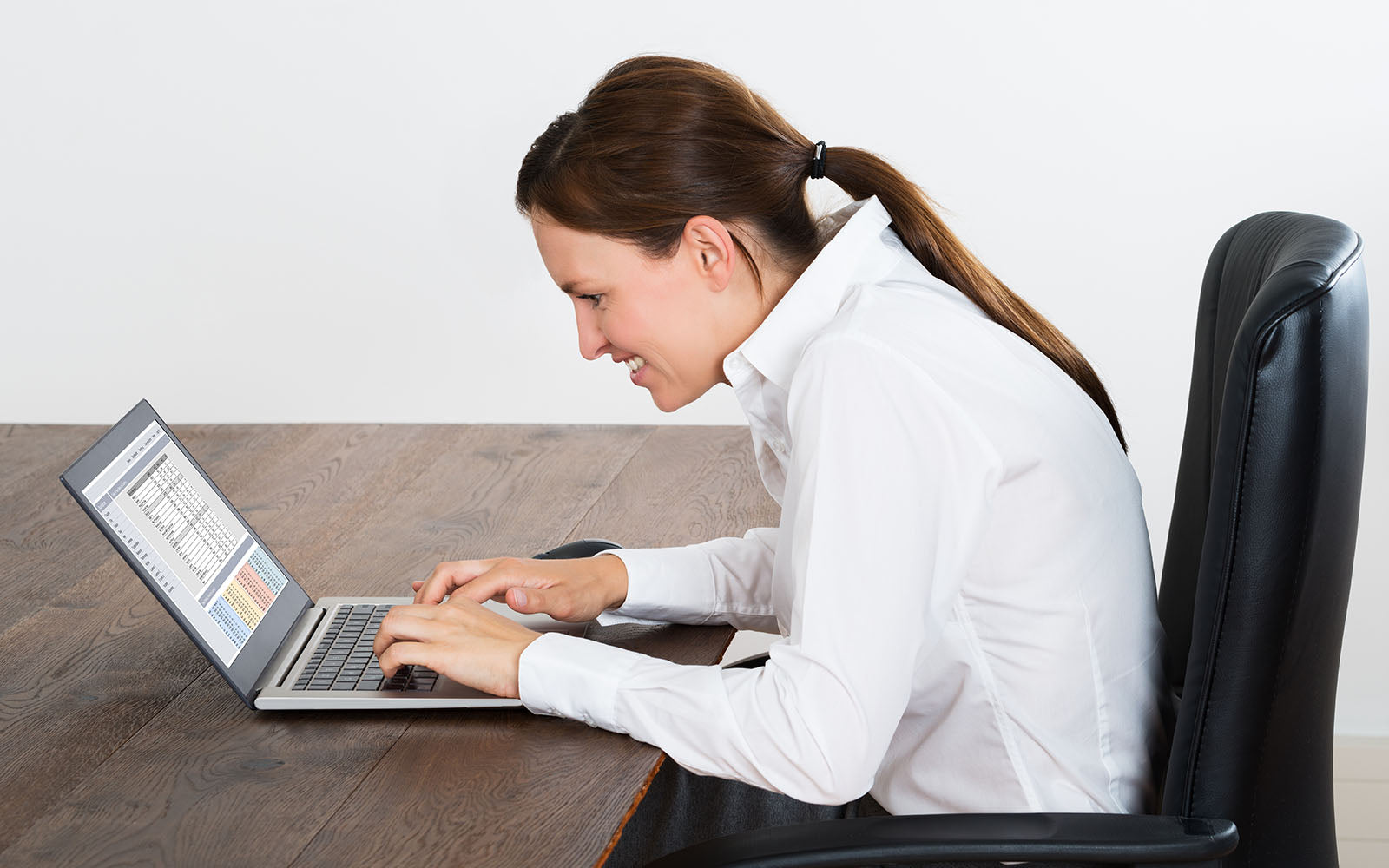
Causes of mid back pain
Mid back pain between the shoulder blades, or what is known as 'thoracic' back pain, is caused in the majority of cases by a poor slouched posture while sitting sustained for long periods of time. Sedentary lifestyle and being overweight can also contribute to low back pain because the stabilising abdominal muscles switch off and the discs get compressed respectively. For more information on pain physiology, read our article What is Pain.
Tips for preventing and treating mid back pain
Mild to moderate mid back pain can be relieved by following the tips below. Areas of tightness, stiffness or tension should also be treated before they become more serious and potentially develop into chronic pain.
1. Improve posture
Prolonged sitting with a slouched posture can lead to stiffness in the spinal joints, knots in the muscles between your shoulder blades, and in some cases a burning sensation. Unfortunately, long term slouched sitting can actually result in permanent changes in the discs and bones in the thoracic spine (e.g. extremely hunched older citizens).
Maintaining good posture all day is not easy so here are some practical tips to increase your postural awareness and remind you to 'sit up straight':
- visual stimuli on computer screen / keyboard / mouse such as red stickers or pictures of stretching;
- audible stimuli such as reminders or alarms on your phone or computer every 30 minutes; and
- use of equipment such as BakBalls behind your back when sitting, or even tape across your shoulders or down your back applied by a Physiotherapist.
BakBalls are the ideal preventative solution and were invented by Mark Alexander, former Sports Physiotherapist to the Australian Olympic team, to reverse the stiffness developed from poor sitting postures. BakBalls are a self-treatment device that relieves back pain by replicating a physiotherapy treatment or massage.
Watch this video to see how BakBalls work in your upper back:
When driving, ensure your lower back retains a curve by using BakBalls behind your spine which prevents the thoracic spine from slouching forwards.
Read our article How to Use BakBalls to learn how to relieve pain and improve posture.
2. Stretching
It is critical to ensure ideal postures are maintained in sitting and standing for the majority of the day or else eventually your back will hurt. When sitting, you should stand and stretch (or lie down) every 30 minutes to take the strain off your discs and allow them to recover from the unavoidable gravitational compression. Similarly, if standing for prolonged periods you need to sit or lie down every 30 minutes.
Below are some examples of stretches that you can do at work to maintain good posture. Chairs, pillows, and mattresses must all be in good condition and supportive.
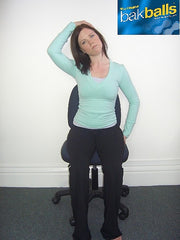
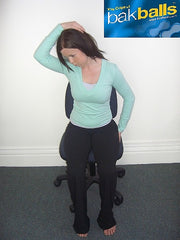
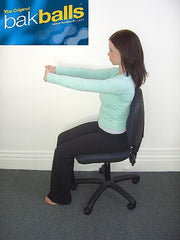

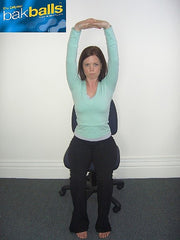
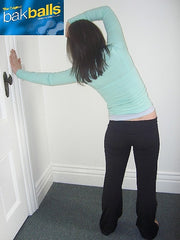

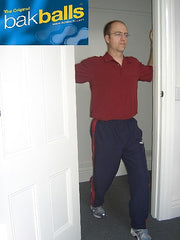
3. Strengthening and stability
Specific stability exercises prescribed by physiotherapists are vital to maximise the health of your spine and relieve back pain. Research shows that within 24 hours after experiencing back pain, the muscles protecting the spine can reduce in size and activation. Physiotherapists need to prescribe targeted exercises to reverse the effects of pain and prevent slouching in sitting. Exercises that optimally prevent slouching are seated rows, and shoulder retraction exercises where you pull your shoulder blades down and back together. To find your local physiotherapist visit the Australian Physiotherapy Association website. General gym programs and strengthening exercises are also critical to prevent and relieve back pain. If you exercise for 3 hours a week, this has been shown to reduce the incidence of back pain.
4. Staged return to normal exercise
It is critical to stage or gradually increase the levels of exercise to prevent aggravation of back pain. Common sense says to increase exercise levels over time to prevent doing too much, too soon. For example, after an episode of back pain don't attempt to garden for 2 hours or walk 10km. Start from a low base, and gradually increase the duration and intensity of exercise. The 10% rule is a good rule of thumb: each week increase the duration OR intensity of exercise by 10%. Finally, back pain sufferers need to take responsibility for their own back pain as the most common causes of back problems are sustained postures, bending and lifting activities which are within one's control.


